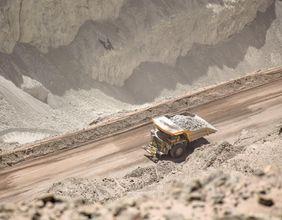Now that one of the most promising unique gold producer from the New South Wales has commenced the exploration on its flagship project, the Stuart Town project following the successful listing of the Kaiser Reef Ltd (ASX:KAU) through one of the leanest public issues of the recent times on the ASX. It is amazing to see the overwhelming response by the investors which include many mums and dads who take interest in further development of the Stuart Town Mining district, in the Lachlan fold belt.

Source: Kaiser Reef Limited
The aurora of the next generation of gold miners in the Lachlan fold belt, would be led by the Stuart Town Mining project. As gold explorers right from the mining majors to the juniors, all line up to secure mining tenement in the region. Kaiser Reef holds the exploration licenses for one of the most promising exploration ground located between Newcrest’s Cadia and Ridgeway operations, Australia largest gold mine and the Alkane Resources’ newest discovery, the fantastic Boda project.
Historic Mining suggests presence of large scale, low cost Gold mineralisation
The Stuart Town goldfield hosted over 80 quartz vein lode and alluvial gold occurrence, with mining commencing in 1850s, recording over 5,000 kilograms of gold (No record of production between 1850s-1875).
Historically mined gold production was associated to the laminated quartz veins, in which the gold mineralisation is linked to sulphide minerals, such as pyrite and arsenopyrite, galena, chalcopyrite and sphalerite. Though further metallurgical test work is anticipated in the longer timeframe, the sulphide nature of ore could be amenable to the conventional metallurgical processing involving flotation process. Flotation is one of the most economically feasible processing methods with limited reagents costs in comparison to Leach methods, given that the metallurgical recovery is high enough.
Future Strategy for the Stuart Town Project: Must Read
Historic gold production is linked to quartz vein and alluvial concentrations. Historic data suggest presence of gold veins in width from 0.1 m to 1.2 m with veins strike extending up to several hundred metres. The historically mined sorted head ore grade results in more than 62 grams per tonne of ore, which is amongst one of the highest grades given the average mined grade for an open pit mining operation ranges around 1 to 4 grams of Gold per tonnes. We anticipate such high-grade mineralisation would result in huge gold production with minimum capital investment.
With the recorded mining restricted to 65 metres depth and with excellent gold ore grade may lead to open pit mining extracting the shallow high-grade gold mineralisation, further minimising the expected operating and capital cost on development of the mining operations. Kaiser Wilhelm is the largest gold producing historic operation which produced over 112 kg of gold with an average sorted grade of 24 grams a tonne.
Kaiser Reef Secures further Exploration License Applications: Must Read
Kaiser Reef, the unique gold explorer recently announced the commencement of extensive high-resolution airborne magnetic and radiometric survey. Kaiser Reef has appointed “Resource Potentials Pty Ltd” to assess the Stuart Town gold project, focussing on the bulk tonnage mineralisation.
Kaiser Reef is trading at $0.19 a share up by 8.571% (AEST: 01:15 pm) on 17 April 2020, with a market capitalization of $5.85 Million.
Kaiser Reef seems to be progressing on the right project and right commodity at the right time. Development of Stuart Town Gold project could result in the emergence of a unique large scale and highly profitable Gold producer.






